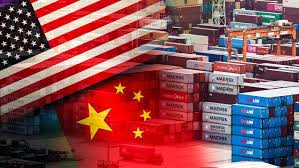
US - China Trade war
Temporary Relief in the US-China Trade War, But Core Issues Remain
After months of rising tensions, the United States and China have agreed to temporarily ease their trade conflict following key discussions in Geneva. This truce comes after both sides had imposed extremely high tariffs on each other’s goods, causing fears of a global economic slowdown and unrest in financial markets. Though this pause has been welcomed worldwide, it is not a full trade agreement. It only reverses the latest and most damaging tariff hikes and doesn’t resolve deeper disputes.
How the Situation Escalated
The trade war took a sharp turn in February 2025 when US President Donald Trump announced new import taxes—10% on goods from China and 25% on those from Mexico and Canada. These were presented as steps to address the fentanyl crisis and to reduce the US trade deficit while protecting domestic industries. China quickly retaliated with its own tariffs on US products.
The standoff worsened further on April 2, when the US imposed even higher tariffs, prompting China to hit back hard. By April 10, the US had raised tariffs on Chinese goods to a shocking 145%, and China responded by hiking its tariffs on American goods to 125%. These rates were so extreme that normal trade between the two countries nearly stopped, resembling an unofficial trade ban.
What Was Agreed in Geneva
In the Geneva talks, both sides agreed to lower these extreme tariff levels. The US will reduce its April tariffs from 145% to 30%, and China will lower its rates from 125% to 10%. These changes will stay in place for the next 90 days.
Of the 30% US tariff, 10% existed before April 2, and 20% is connected to earlier action related to the fentanyl issue. China, in response, has suspended its retaliatory tariffs for now.
In addition, the US and China agreed to start a fresh round of economic dialogue. According to US Treasury Secretary Scott Bessent, the deal doesn’t cover industry-specific tariffs. He also emphasized that the US would continue focusing on key sectors like pharmaceuticals, semiconductors, and steel, where over-dependence on foreign suppliers is seen as risky.
Why Both Countries Chose to Step Back
The key reason behind the de-escalation is the serious economic harm caused by the trade war. These massive tariffs didn’t just hurt the US and China—they also disrupted global trade flows and investor confidence.
The US economy had already shrunk by 0.3% in the first quarter of 2025, even before the full effects of the tariffs were felt. Experts feared that the US was slipping toward a recession. In China, where exports play a huge role in the economy, the impact was also severe, with rising worries about both economic health and political stability.
Officials on both sides admitted the economic cost was too high to ignore. Scott Bessent described the situation as nearly an "embargo," saying that neither side wanted such an outcome. Both countries also agreed that cutting economic ties completely—known as "decoupling"—would be damaging for everyone.
A Pause, Not a Solution
Although this agreement is a step in the right direction, it does not resolve the long-term trade dispute. The rollback mainly undoes the tariff hikes made after April 2, but several steep tariffs are still in place.
For American consumers, a 30% tariff on Chinese goods still means higher prices and strained supply chains. Indian and global businesses, too, face higher input costs. China continues to face average US tariffs of around 40%, much higher than the 8–14% range for many other countries.
More importantly, the main issues behind the trade war—such as the US goal to reduce its trade deficit and bring back manufacturing jobs—remain unresolved. These long-term concerns were not addressed in the Geneva talks.
What It Means for India: Risks, Relief, and New Opportunities
The easing of US-China tensions brings mixed outcomes for India. On the positive side, calmer global markets can attract more foreign investment to India and reduce economic uncertainty. The pause also means continued demand for alternative suppliers, giving Indian sectors like electronics, textiles, and pharma a chance to expand. However, cheaper Chinese goods returning to the US could challenge Indian exports due to increased price competition. This situation is a reminder for India to move fast on improving manufacturing quality, expanding into new export markets, and finalizing trade agreements. With the right reforms, India can turn this temporary truce into a long-term gain.
Looking Ahead
The announcement of the agreement gave a boost to financial markets. The US dollar gained strength, and global stock prices rose, giving investors some relief from recession worries.
However, the uncertainty hasn’t gone away. The trade war has only cooled temporarily—it hasn't ended. The US is still taking steps to make trade with China more difficult. Many businesses remain cautious about investing or expanding because of the unpredictable policy environment.
Final Thoughts
The Geneva agreement has helped avoid a complete breakdown in US-China trade, offering short-term relief. But this truce is only valid for 90 days, and many major tariffs still remain. The core trade issues that sparked the conflict have not been resolved. While the crisis has been postponed, the future remains uncertain. The risk of a renewed escalation continues to hang over the global economy—and countries like India must prepare wisely for what comes next.